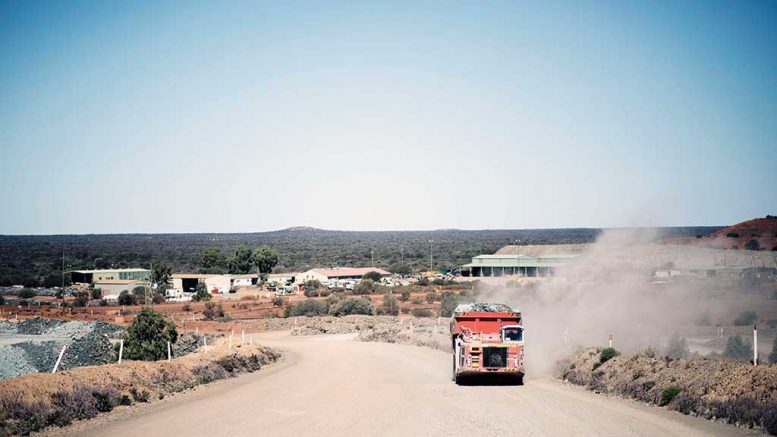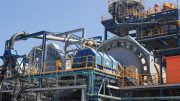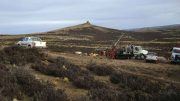In its first year as a public company and gold producer, Superior Gold (TSXV: SGI) churned out 82,019 oz. of the precious metal from its Plutonic mine in Western Australia, and this year the Toronto-based junior hopes to boost that number to 100,000 oz. gold.
The mine, which has produced more than 5.5 million oz. gold since 1990, was once owned by Barrick Gold (TSX: ABX; NYSE: ABX). The Canadian gold major acquired Plutonic in 2001 through its acquisition of Homestake Mining, and ran it until 2014, when it sold it during an asset purge to Australian producer Northern Star Resources (ASX: NST).
Superior Gold took possession of the mine in October 2016 in a cash-and-share deal with Northern Star worth A$42 million, or US$32 million, at current exchange rates. Northern Star is Superior Gold’s major shareholder with a 19.2% stake.
The mine started off as an open pit and moved underground, and, according to Chris Bradbrook, Superior Gold’s founder, president and CEO, is the sixth-largest historic gold producer in Western Australia.

Miners outside a portal at Superior Gold’s Plutonic gold mine in Western Australia. Credit: Superior Gold.
Last year Plutonic made US$22.2 million in cash flow for the company — enough funds to start the Hermes open-pit development project on the property in July 2017.
“We grew the balance sheet and built Hermes from our own cash flow, which is unique in our space as a start-up company,” says Bradbrook, noting that Superior ended the year with US$31 million in its treasury and no debt.
Pre-stripping operations at Herme’s Trapper pit began in October and initial processing started in December. Commercial production should kick off soon, and push Superior Gold’s production over the 100,000 oz. mark.
Bradbrook, who founded New Gold (TSX: NGD; NYSE-AM: NGD) and Crocodile Gold (now Kirkland Lake Gold [TSX: KL; NYSE: KL]), says Plutonic has exploration potential within and near the resource, and plans to spend US$5 million in the first half on drilling, and more, if warranted.
“There’s a chance to create real value here with the exploration story and we can self-fund it through our operation,” he says. “The reason we bought Plutonic in the first place was because I saw it as a big mine and a forgotten mine inside Barrick, and it was a big system.”
He points to Kirkland Lake Gold’s experience at Fosterville as an example of how things can change with aggressive drilling. “It was a 4.4 gram gold refractory orebody that was losing money, and basically they got the drills turning and found the Swan Zone, and now it’s a 60-gram gold, free-milling orebody. Now I’m not saying we’re going to find a 60-gram gold orebody, but when you drill these big systems you typically find more, and sometimes you can find some really interesting stuff.”

A model of the eight active mining zones at Superior Gold’s Plutonic mine in Australia. Credit: Superior Gold.
In March, the company released more results from its underground diamond-drill program from December 2017 through January 2018. Findings from the 10,000-metre, 149-hole program include 187 intersections that found more than 5 grams gold per tonne; 103 intersections that found more than 10 grams gold; 30 intersections of more than 20 grams; and seven intersections of more than 50 grams.
“The drilling shows that the system is very strong and we believe it will let us increase the mine life,” Bradbrook says. “When we bought it the reserve life was only one year underground, and we’re looking to do an update on reserves and resources by the early second quarter of this year and get the underground reserves up to three years, and then move it upwards during the year.”
Plutonic has measured and indicated resources of 3.5 million tonnes grading 5.5 grams gold for 620,000 contained oz. gold, and another 5.2 million tonnes grading 4.4 grams gold for 750,000 oz. gold inferred. Proven and probable reserves stand at 600,000 tonnes grading 4.6 grams gold for 82,000 oz. gold.
Numerous recent high-grade intersections at Plutonic within and near the resource areas in eight different zones have yielded even more optimism that the company can increase gold production and feed the mill.

A bird’s eye view of the surface infrastructure at Superior Gold’s Plutonic mine in Western Australia. Credit: Superior Gold.
Highlights include 10.2 metres grading 25.2 grams and 5.2 metres of 45 grams in the Pacific Zone; 5.7 metres of 19.6 grams and 1 metre of 83.9 grams in the Area 134 Zone; 3.3 metres of 61 grams and 6 metres of 30 grams in the Cortez Zone; 2.9 metres of 42.4 grams in the Caribbean Zone; 7.3 metres of 13.9 grams and 1.1 metre of 50.1 grams in the Caspian Zone; 2.9 metres of 69.3 grams and 7.5 metres of 33.3 grams in the Indian Zone; 2.2 metres of 64 grams in the Baltic Zone; and 0.3 metre of 1,525 grams in the Timor Zone.
Meanwhile, at Hermes — a conventional, open-pit operation — the focus so far has been on three pits: Hawkeye, Trapper and Klinger. But potential near-surface exploration includes three other targets: Winchester, Hot Lips and Radar.
Hermes has measured and indicated resources of 3.7 million tonnes grading 2.2 grams gold for 260,000 contained oz. gold and inferred resources of 0.6 million tonnes grading 2.5 grams gold for 49,000 contained oz. gold. Proven and probable reserves stand at 1.6 million tonnes grading 2 grams gold for 101,000 oz. gold.
“We’ve bought a really good asset for an excellent price — we’ve hit the ground running. We’re making money and building the balance sheet, and have built a project from cash flow, and we’re growing,” Bradbrook says. “We have exploration upside and we’re just getting on peoples’ radar screens, so it’s a brand-new story.”
Over the last year, Superior Gold’s shares have traded within a range of 85¢ (November 2017) to $1.32 (March 2018), and at press time changed hands at $1.25 apiece.
The company is covered by six analysts who have “buy” ratings on the stock. As recently as Feb. 22, the analysts had target ratings of $1.80 per share (BMO), $2.30 (Cormark), $2.25 (GMP), $1.50 (Haywood), $2.05 (M Partners) and $2.70 (PI Financial).
In addition to Northern Star, other shareholders include Sentry Investments (13.5%), board and management (8.7%), Sprott (8.7%), Greywolf (8.4%), Black Rock (5%), RBIM (3.3%) and Hadron (3.3%).






Be the first to comment on "Superior Gold expands Plutonic"